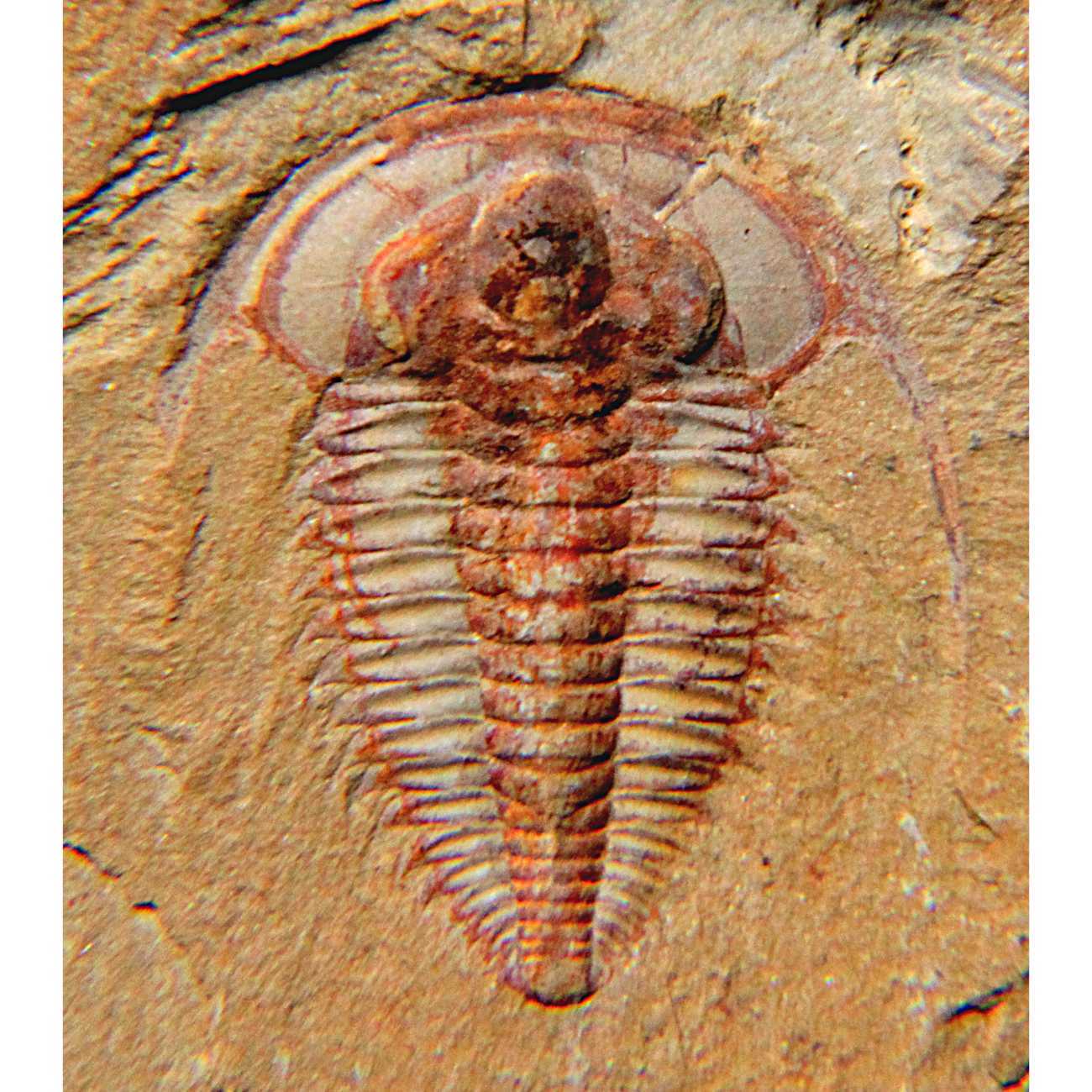©Copyright 2018 GEOSCIENCE RESEARCH INSTITUTE
11060 Campus Street • Loma Linda, California 92350 • 909-558-4548


The trilobite Eoredlichia intermedia, a marker species for both of the lower Cambrian Qingjiang and Chengjiang faunas. Photo Dwergenpaartje CCbySA3.0, Wikimedia Commons.
Dongjing Fu, Guanghui Tong, Tao Dai, et al, Xingliang Zhang. 2019. The Qingjiang biota – a Burgess Shale-type fossil Lagerstätte from the early Cambrian of South China. Science363: 1338-1342 (2019)
Summary. A new Lower Cambrian site in the Shuijingtou Formation of China’s Hubei Province has produced more than 100 genera of well-preserved fossils, representing at least 18 body plans.[1] More than half the species are new to science. Notably, the fauna includes numerous jellyfish, sea anemones, “mud dragons” (kinorhynchs), worms, and other soft-bodied taxa rarely preserved as fossils. The fauna is known as the Qingjiang biota, named after a nearby town and river. The newly discovered site is stratigraphically similar to the famous Chengjiang fauna, but strongly different in faunal composition. The degree of differences in the two faunas was unexpected, since the Chengjiang fauna has been extensively collected and studied. The uniqueness of the Qingjiang fauna is attributed to habitat differences – the Qingjiang site is interpreted as a more distal shelf habitat compared with the Chengjiang site. The Qingjiang biota may turn out to be the most diverse Cambrian fauna discovered to date.
Comment. Discovery of this new fauna increases the diversity of animals in the “Cambrian Explosion,” a feature consistent with creation theory, but increasingly problematic for evolutionary theory. Rapid preservation is attributed to sediment gravity flows that transported some of the organisms downslope, burying them on top of other organisms living there. This is an interesting case where the faunas are different enough that scientists might be tempted to try to trace evolutionary ancestry from one to another, but their location in the same stratigraphic interval precludes that possibility.
An interesting discovery is that the Qingjiang comb jelly has the same body plan as modern comb jellies This raises doubts about the recent interpretation of some Chinese fossils, referred to as “dinomischids” thought to show that comb jellies evolved from a polyp-like ancestor.[2] The ctenophore body plan was already in existence when the “dinomischids” were preserved.

Vetulicolia cuneata, member of an extinct phylum. Vetulicolians are one of the soft-bodied taxa found in both Qingjiang and Chengjiang faunas. Photo: Masahiro Miyasaka, CCbySA4.0, Wikimedia Commons.
It is interesting to note that all Cambrian fossils are from marine habitats, close to or on the seafloor. During a global catastrophe, like the biblical flood, these communities would be highly susceptible to rapid burial by sediment gravity flows. Abrupt burial of the seafloor today would likewise bury assemblages of animals with disparate body plans, related ecologically but not phylogenetically. Segregation of species in different seafloor habitats appears to be a feature of both modern and fossil communities.
[1]Supplementary materials for The Qingjiang biota - a Burgess Shale-type fossil Lagerstätte from the early Cambrian of South China. Dongjong Fu et al. DOI: 10.1126/science.aau8800
[2]Zhao Y, Vinther J, Parry LA et al, Cong P. 2019. Cambrian sessile, suspension feeding stem-group ctenophores and evolution of the comb jelly body plan. Current Biology29(7):1112-11125 e2. Doe: 10.1016/j.cub.2019.02.036